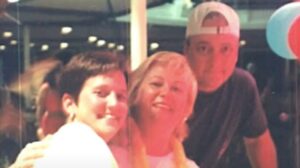“Uncovering the Sticky Secret: The Surprising Inventor Behind Super Glue’s Revolutionary Bond!”
Shortly after graduation, Coover landed a job as a chemist at the Eastman Kodak company in Rochester, New York. At the time, Kodak was looking for a synthetic replacement for the optical glass used to make aircraft gunsights. Among the many materials being studied was a family of polymers known as cyanoacrylates. Normally a thick, transparent gel, when exposed to moisture cyanoacrylates spontaneously polymerize, the small molecular subunits or monomers assembling themselves into long, stronger and more flexible chains. However, as Coover later recalled, these compounds quickly proved less than up to the task:
“I was working with some acrylate monomers that showed promise. But everything they touched stuck to everything else. It was a severe pain.”
So the team moved on to more promising materials, and cyanoacrylates were quickly forgotten – for the time being, at least.
In 1951, Coover relocated to the Kodak facility in Kingsport, Tennessee, where he was assigned to a team of chemists researching heat-resistant polymers for jet aircraft canopies. While looking for an adhesive capable of bonding the various layers of a canopy together, Coover suddenly remembered the cyanoacrylates he’d experimented with seven years earlier. Unlike most adhesives, cyanoacrylates needed no additional heat or pressure to cure, greatly simplifying the manufacturing process. The team thus began experimenting with the compounds, synthesizing nearly 1000 different formulations. One day, Coover’s colleague Fred Joyner attempted to measure the optical properties of formulation 910 by spreading the compound between the prisms of a machine called a refractometer. To his horror, however, the compound immediately cured, permanently bonding the prisms together. As one of his colleagues later recalled:











